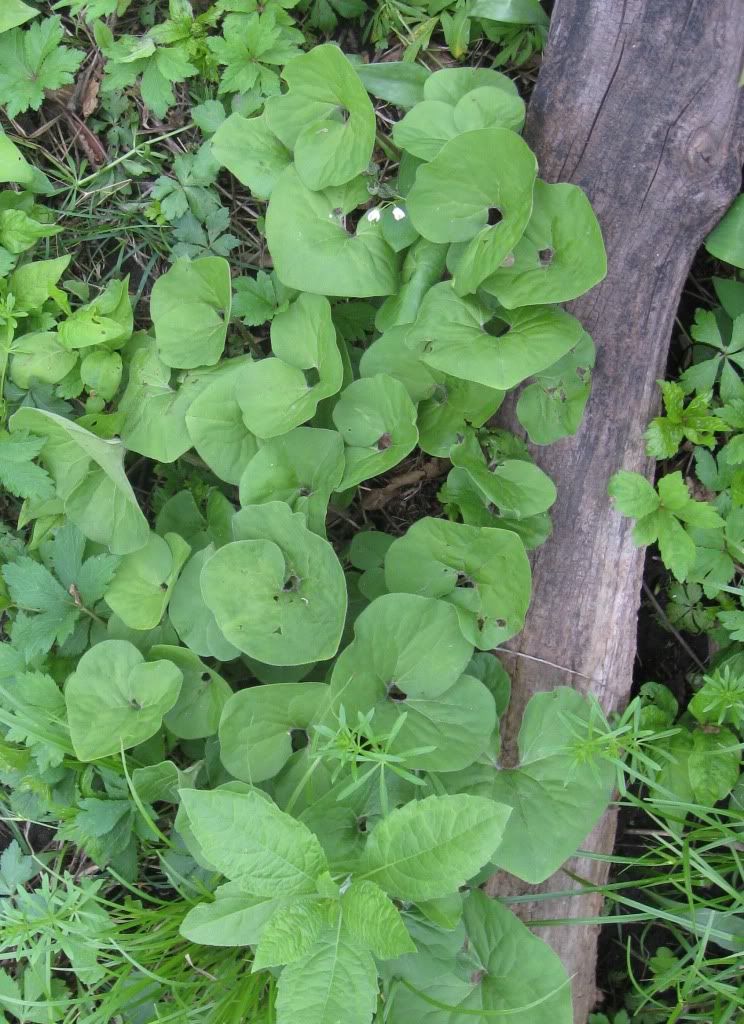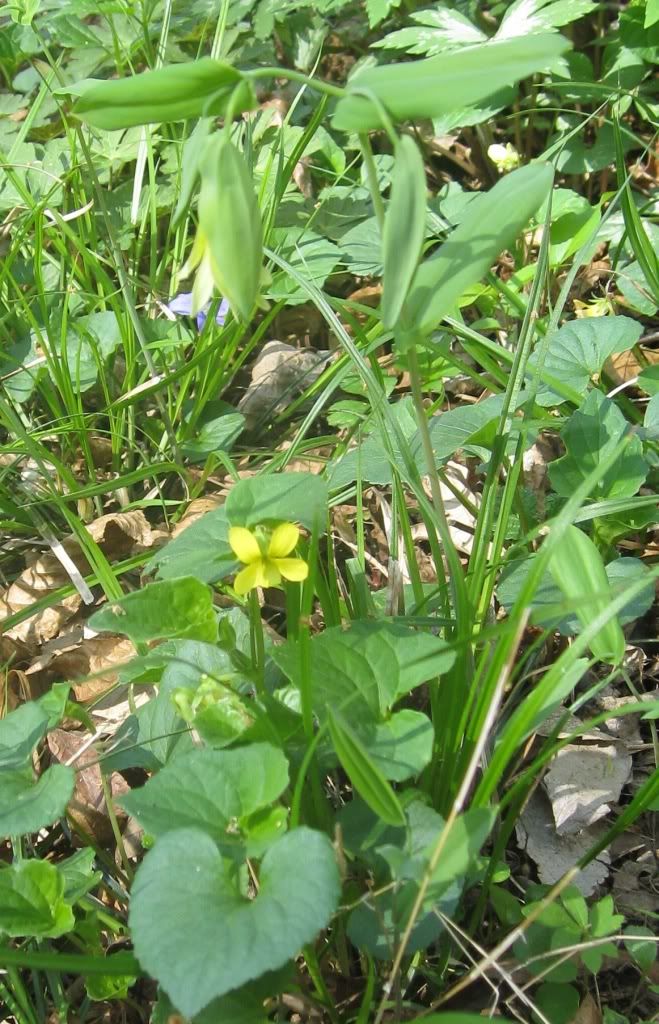This week’s featured native plant is wild ginger. Although common in wooded areas throughout Iowa, its flowers are easily missed unless you’re looking for them. Wild ginger usually blooms in April and May. I’ve posted two pictures after the jump, along with a couple of bonus photos of violets, because their leaves can resemble wild ginger leaves.
This is an open thread: all topics welcome.
Native Americans and early settlers used wild ginger to treat a variety of medical conditions. It’s not related to the ginger most commonly used for cooking, which grows in the tropics. However, its roots smell like ginger, and they can be peeled and used as a flavoring in food. Sylvan Runkel and Alvin Bull write in Wildflowers of Iowa Woodlands,
For the Meskwaki, wild ginger was probably the most important native seasoning. They also thought its use eliminated danger of poisoning when eating an animal that had died of unknown causes. They also chewed the root and spit it upon bait to improve the chances of catching fish.
Wild ginger tends to grow in large groups. Here’s a view of the plant from above, as you would see while walking through the woods.
Until last spring, I did not even realize that this was a flowering plant. My son spotted a bloom growing close to the ground, almost horizontal from the stalk. It was an unusual maroon color. Once we found out that this was a wild ginger flowering, we started noticing them everywhere. You have to crouch down and look under the leaves to see the flowers, which are sometimes almost buried in leaf litter.
Viewed from above, wild ginger can be confused with violets, because violet leaves are also shaped like hearts or arrows. Telling these plants apart is no problem when the violets are blooming, as they are here.
If you see no flowers above (as with violets) or below (as with wild ginger), there are two simple ways to tell these plants apart. What I would call stems, but are technically petioles, are smooth on violets but hairy on wild ginger.
Second, the edges of wild ginger leaves are smooth, whereas violet leaves have shallow notches around the edge.
The “teeth” along the edge of the leaves are easier to see on the yellow violet at the foreground of this picture.




